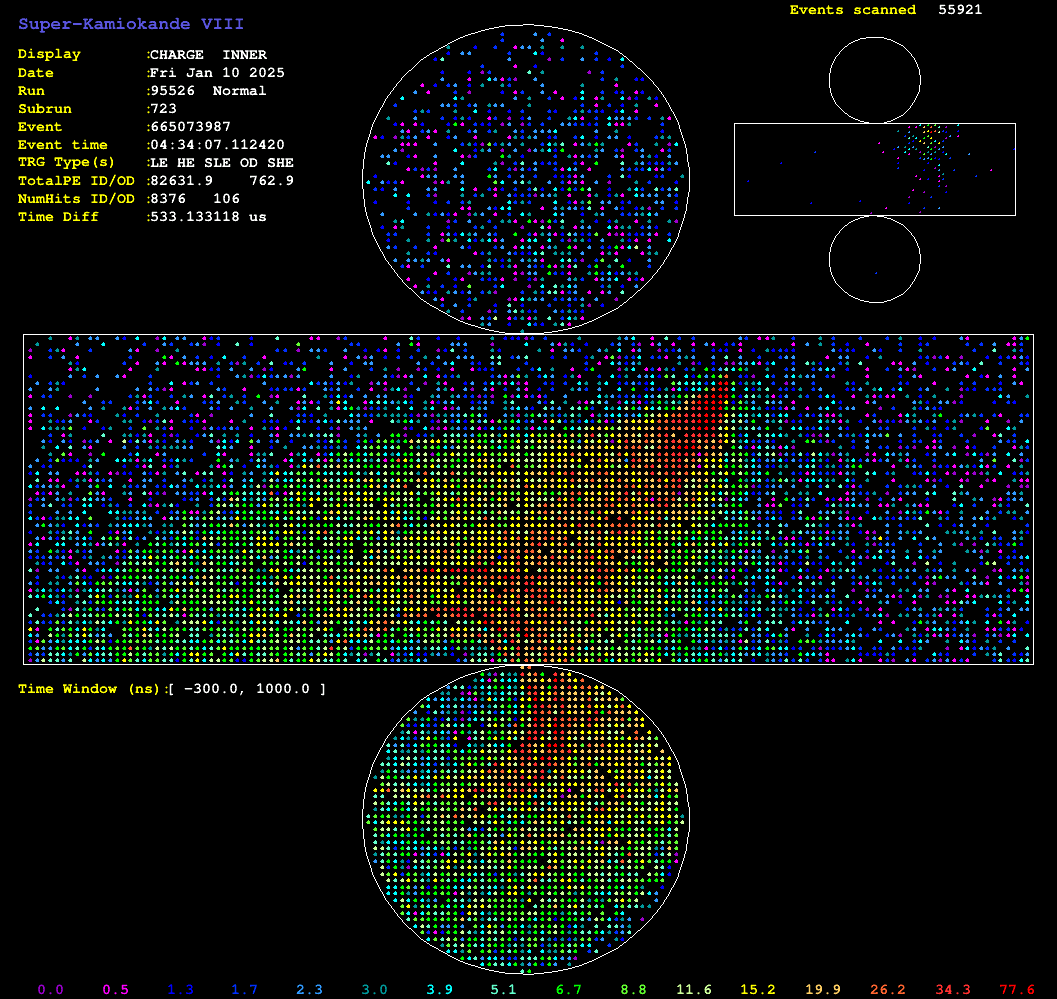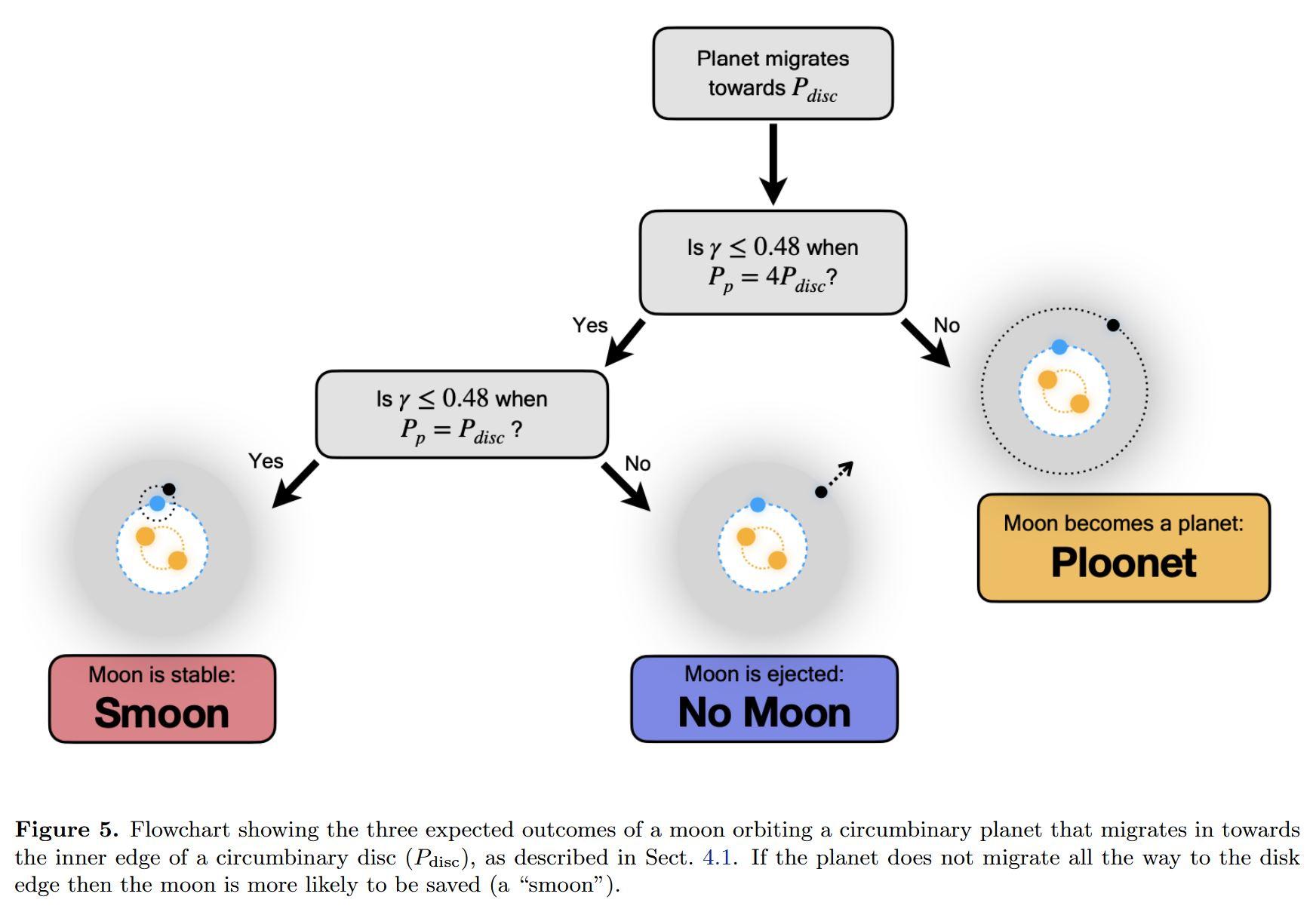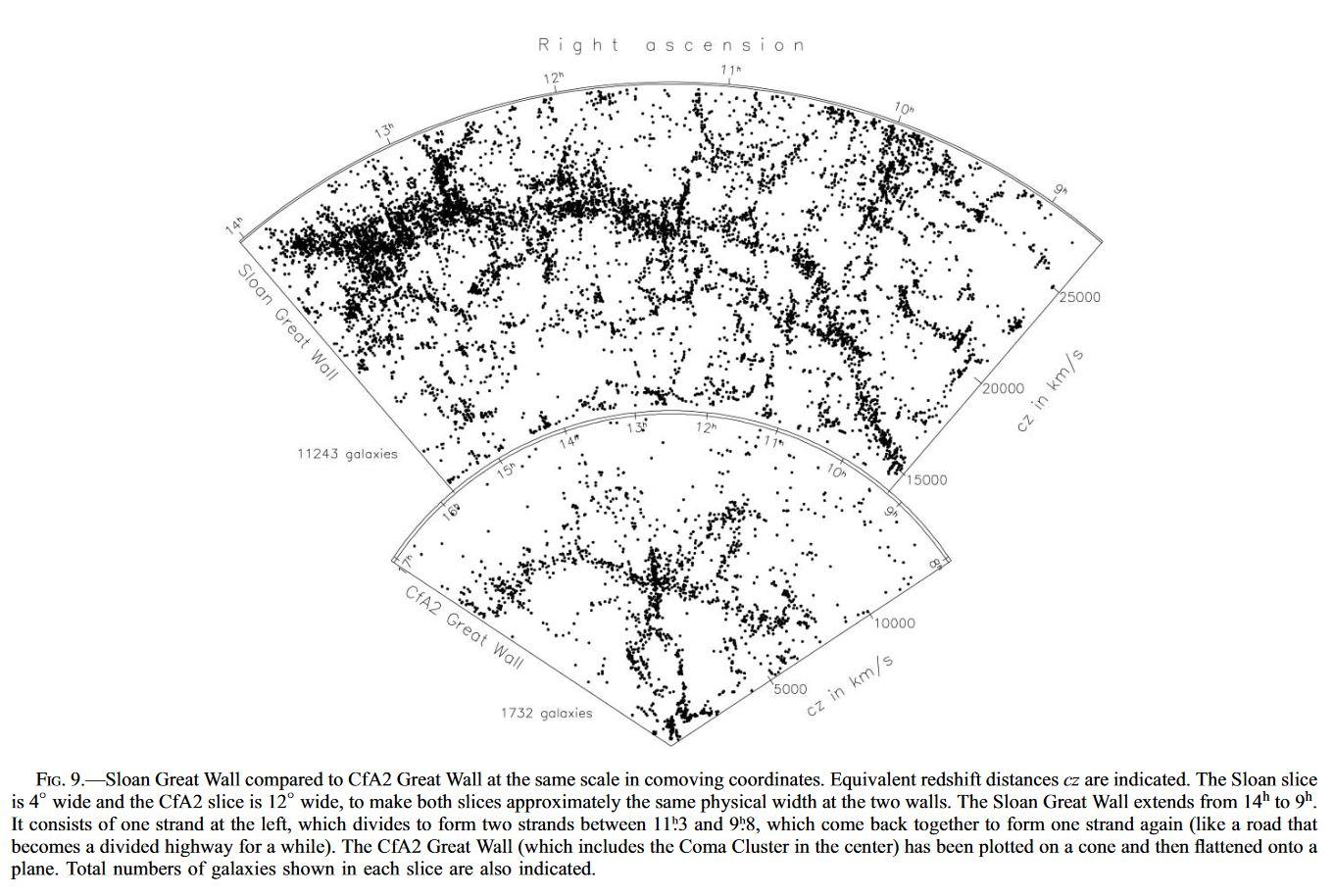As our viewpoint rotates around the black hole, we see different parts of the fast-moving gas in the accretion disk moving directly toward us. Due to a phenomenon called "relativistic Doppler beaming," gas in the disk that's moving toward us makes that side of the disk appear brighter, the opposite side darker. This effect disappears when we're directly above or below the disk because, from that angle, none of the gas is moving directly toward us.
When our viewpoint passes beneath the disk, it looks like the gas is moving in the opposite direction. This is no different that viewing a clock from behind, which would make it look like the hands are moving counter-clockwise.
CORRECTION: In earlier versions of the 360-degree movies on this page, these important effects were not apparent. This was due to a minor mistake in orienting the camera relative to the disk. The fact that it was not initially discovered by the NASA scientist who made the movie reflects just how bizarre and counter-intuitive black holes can be!
Credit: NASA’s Goddard Space Flight Center
Jeremy Schnittman (NASA/GSFC)
Scott Wiessinger (USRA)
Francis Reddy (University of Maryland College Park)
Francis Reddy (University of Maryland College Park)
>>https://svs.gsfc.nasa.gov/13326#section_credits
#space #blackhole #astrophysics #astrophotography #photography #astronomy #science #nature#NASA#ESA
Content Warning
Illustration Credit: NASA, Pablo Garcia
https://www.nasa.gov/
Explanation:
How do black holes create X-rays? Answering this long-standing question was significantly advanced recently with data taken by NASA’s IXPE satellite. X-rays cannot exit a black hole, but they can be created in the energetic environment nearby, in particular by a jet of particles moving outward. By observing X-ray light arriving from near the supermassive black hole at the center of galaxy BL Lac, called a blazar, it was discovered that these X-rays lacked significant polarization, which is expected when created more by energetic electrons than protons. In the featured artistic illustration, a powerful jet is depicted emanating from an orange-colored accretion disk circling the black hole. Understanding highly energetic processes across the universe helps humanity to understand similar processes that occur on or near our Earth.
https://www.nasa.gov/missions/ixpe/nasas-ixpe-reveals-x-ray-generating-particles-in-black-hole-jets/
https://apod.nasa.gov/apod/ap031128.html
https://apod.nasa.gov/apod/ap240507.html
https://apod.nasa.gov/apod/ap250504.html
https://en.wikipedia.org/wiki/Blazar
https://en.wikipedia.org/wiki/Polarization_(waves)
https://en.wikipedia.org/wiki/BL_Lacertae
https://home.cern/science/physics
https://ui.adsabs.harvard.edu/abs/2025arXiv250501832A/abstract
https://science.nasa.gov/ems/11_xrays/
https://pwg.gsfc.nasa.gov/Education/whelect.html
https://home.cern/news/news/physics/proton-century
https://chandra.si.edu/art/xray/
https://spaceplace.nasa.gov/aurora/en/
https://apod.nasa.gov/apod/ap250509.html
#space #blackhole #astroart #astronomy #physics #photography #science #nature#NASA








